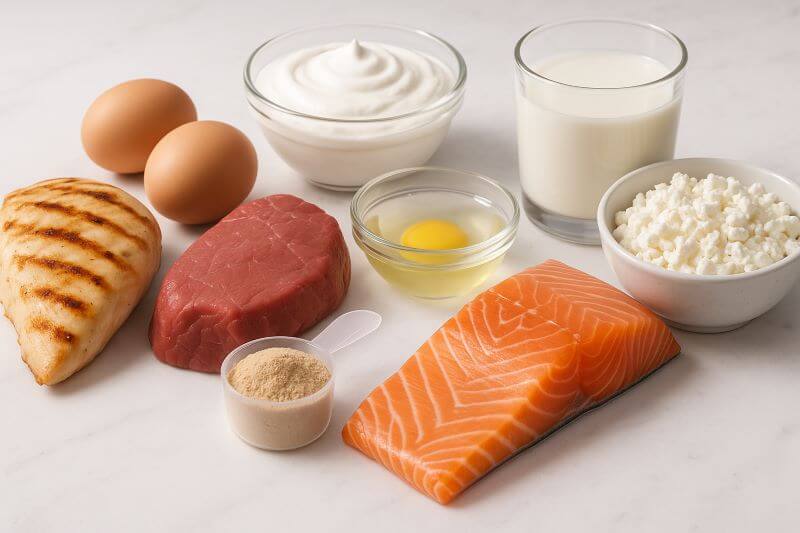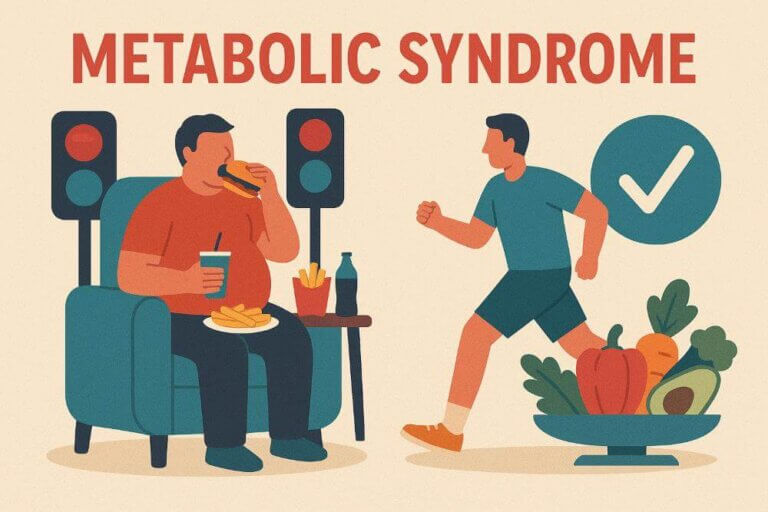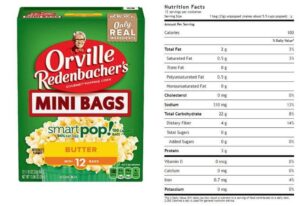9 min read, 1663 words
Muscle Protein Synthesis: A Guide to Building Muscle
Think of your muscles like a construction site that never sleeps. There are workers constantly tearing down old, damaged structures (muscle tissue) and building new, stronger ones (muscles). Muscle protein synthesis (MPS) is like having the world’s best construction crew working around the clock. The more efficiently they work, the better your results. The problem? Most people have no idea how to be a good foreman.
Here’s the thing: your body is already doing this incredible muscle-building process whether you know it or not. But by the end of this article, you’ll know exactly how to optimize it. No PhD in biochemistry required—just some practical knowledge that’ll make your workouts actually work for you.
Your muscles are incredibly adaptive and forgiving. Give them the right signals through training, adequate protein, and proper recovery, and they’ll reward you with the strength and physique you’re working toward!
Coach Ken
What Is Muscle Protein Synthesis?
Muscle protein synthesis is your body’s process of building new muscle proteins to repair and grow muscle tissue, especially after exercise. Every day, your muscles go through a constant cycle of breaking down (muscle protein breakdown) and building up (muscle protein synthesis).
The key to getting stronger and more muscular? Making sure the building up side of this process wins. It’s like a financial account—you want more deposits than withdrawals.
mTOR: The Master Switch
Here’s where it gets interesting. Your body has a master switch called mTOR (mechanistic target of rapamycin—don’t worry, there won’t be a quiz). Think of mTOR as the project manager at your muscle construction site. When mTOR gets the right signals, it basically yells, “All right, crew! Time to build some serious muscle!”
What flips that switch? Several things, but one of the biggest players is an amino acid called leucine. Leucine is like the VIP guest at the muscle-building party. When enough leucine shows up (we’re talking about 2.5-3 grams), it sends a direct signal to mTOR saying, “Hey, we’ve got premium building materials here. Let’s get to work!”
This isn’t just bodybuilder science, either. Whether you’re 25 or 65, whether you want to look like a fitness model or just want to carry groceries without your back giving out, understanding MPS is your ticket to results that actually stick.
The key takeaway here? Leucine is the amino acid that triggers muscle protein synthesis. Remember this—we’ll come back to why it matters so much for your daily nutrition choices.
What Stimulates MPS?
Now for the good stuff—how to actually make this work for you.
Training Factors
The Foundation
Progressive overload is non-negotiable. Your muscles need a reason to grow, and that reason is gradually increasing demands over time. This doesn’t mean adding weight every single workout (that’s a fast track to injury), but it does mean your muscles should be challenged consistently. Whether that’s an extra rep, an extra set, or slowing down your tempo, your muscles need to think, “We better get stronger because this human keeps asking more of us.”
Here’s what most people miss: rest is when the actual muscle building happens. You break down muscle in the gym, but you build it back up stronger during recovery. Skipping rest days isn’t hardcore—it’s counterproductive. Your MPS rates are actually highest during sleep and recovery periods.
Nutrition Factors
Feeding the Construction Crew
Let’s talk leucine again. That 2.5-3g threshold isn’t just a random number—it’s based on research showing this is where MPS really kicks into high gear. You’ll find this amount in about 25-30g of high-quality protein: 4-5 oz of chicken, lean meat, or salmon; a cup of Greek yogurt or cottage cheese, or yes, a scoop of whey protein or casein protein.

Pre-workout protein can give you a slight edge by having amino acids ready and waiting when you finish training. Post-workout protein helps kickstart recovery. But the difference isn’t dramatic enough to stress about if your schedule doesn’t allow perfect timing. Having protein within a few hours of training (before or after) is what matters most.
Your total daily protein should land somewhere between 0.8-1.2g per pound of body weight if you’re training regularly. Higher end if you’re in a calorie deficit or doing intense training, lower end if you’re just starting out or in a surplus.
Don’t forget carbs—they’re not the enemy. Carbs help spare protein for muscle building rather than being burned for energy. They also help with workout performance, which supports that progressive overload we talked about.
Age Considerations
Fighting Father Time
Here’s something nobody wants to hear but everyone needs to know: after about age 30, your muscles slowly become more “resistant” to the muscle-building signals. It’s called anabolic resistance, and it’s like your muscle construction crew getting a little lazier and harder to motivate over time.
The good news? You can absolutely fight back. Older adults (40+) need slightly more protein per meal to get that same MPS response—think 30-40g instead of 25-30g. That leucine threshold becomes even more important as you age, so prioritizing high-quality protein sources matters more than ever.
Training-wise, don’t buy into the “take it easy because you’re older” nonsense. Your muscles still respond to progressive overload—you might just need slightly longer recovery periods and should pay extra attention to proper form and injury prevention.
Lifestyle Factors
The Supporting Cast
Sleep is where 70% of your muscle growth happens. During deep sleep, growth hormone peaks and MPS rates soar. Consistently getting 7-9 hours isn’t just nice to have—it’s essential. Chronic sleep deprivation can reduce MPS by up to 20%. No amount of perfect protein timing can fix that math.
Chronic stress elevates cortisol, which directly interferes with muscle building. This is why the chronically stressed, under-slept person struggles to see results despite doing everything “right” in the gym. Managing stress through whatever works for you—meditation, walks, hobbies, therapy—isn’t optional for optimal results.
The Big 3 MPS Myth-Busters
Let’s clear up some nonsense that’s probably messing with your progress right now.
Myth 1: “You need protein every 2 hours or your muscles will disappear”
Reality check: Your muscles aren’t going anywhere if you go three hours without a protein shake. MPS stays elevated for about 3-5 hours after a proper protein dose. Your body isn’t some needy toddler that needs constant feeding. What actually matters is hitting that leucine threshold (2.5-3g) in each meal and spacing your protein throughout the day in a way that makes sense for your life. If that’s three meals, great. If it’s five smaller ones, also great. Stop setting hourly alarms.
Myth 2: “More protein = more muscle, always”
This one makes supplement companies rich and your wallet poor. There’s generally a ceiling to how much protein your muscles can use at once—usually around 25-40g depending on your size and age. Some research suggests this ceiling might be slightly higher, but the returns diminish rapidly once you exceed 50g or so. Eating 80g of protein in one sitting doesn’t make you twice as anabolic; it just makes your bank account lighter. Your body maxes out that MPS response, and the extra protein gets used for energy or other processes (and yes, like any excess calories, could contribute to fat storage if you’re in a caloric surplus). Not exactly the plan.
Myth 3: “Timing doesn’t matter as long as you hit your daily protein”
While total daily protein is crucial, timing isn’t completely irrelevant. Your MPS response peaks and then comes back down, regardless of how much protein is still floating around in your system. It’s like trying to start a fire—you can’t just dump all your kindling on at once and expect it to keep burning all day. Strategic timing helps you get multiple MPS “peaks” throughout the day instead of one big spike followed by a long plateau.
Actionable Steps
What to Do Starting Today
- Audit your protein distribution: Aim for 25-40g of high-quality protein at each main meal, with emphasis on leucine-rich sources like lean meats, dairy, eggs, or whey protein.
- Prioritize your first and last meals: Start your day with a protein-rich breakfast to kickstart MPS after the overnight fast, and end with adequate protein to support overnight muscle building. These bookend meals set the tone for your entire day’s muscle-building potential.
- Time one protein serving around your workouts: Within 2-3 hours before or after training. Don’t stress about the exact timing, but don’t ignore it completely either.
- Prioritize sleep like it’s part of your workout routine: Because it basically is. Set a bedtime that allows for 7-9 hours and stick to it. Some people require a little less, but be honest with yourself for your best results.
- If you’re over 40, bump up your protein: Aim for the higher end of recommendations (1.0-1.2g per pound) and consider 30-40g per meal instead of 25-30g.
- Focus on progressive overload in your training: Whether that’s more weight, more reps, or better form, your muscles need increasing challenges to justify getting stronger.
Remember, consistency beats perfection every single time. You don’t need to nail every variable perfectly—you just need to nail the big ones consistently. Your muscles are incredibly adaptive and forgiving. Give them the right signals through training, adequate protein, and proper recovery, and they’ll reward you with the strength and physique you’re working toward.
The beautiful thing about understanding MPS is that it takes the guesswork out of muscle building. No more wondering if your approach is working—you now know exactly what your muscles need to thrive. Time to put that construction crew to work.
– Coach Ken 🚀
What's a major benefit of resistance training for older adults?
Brought to you by your FNN coaches!







